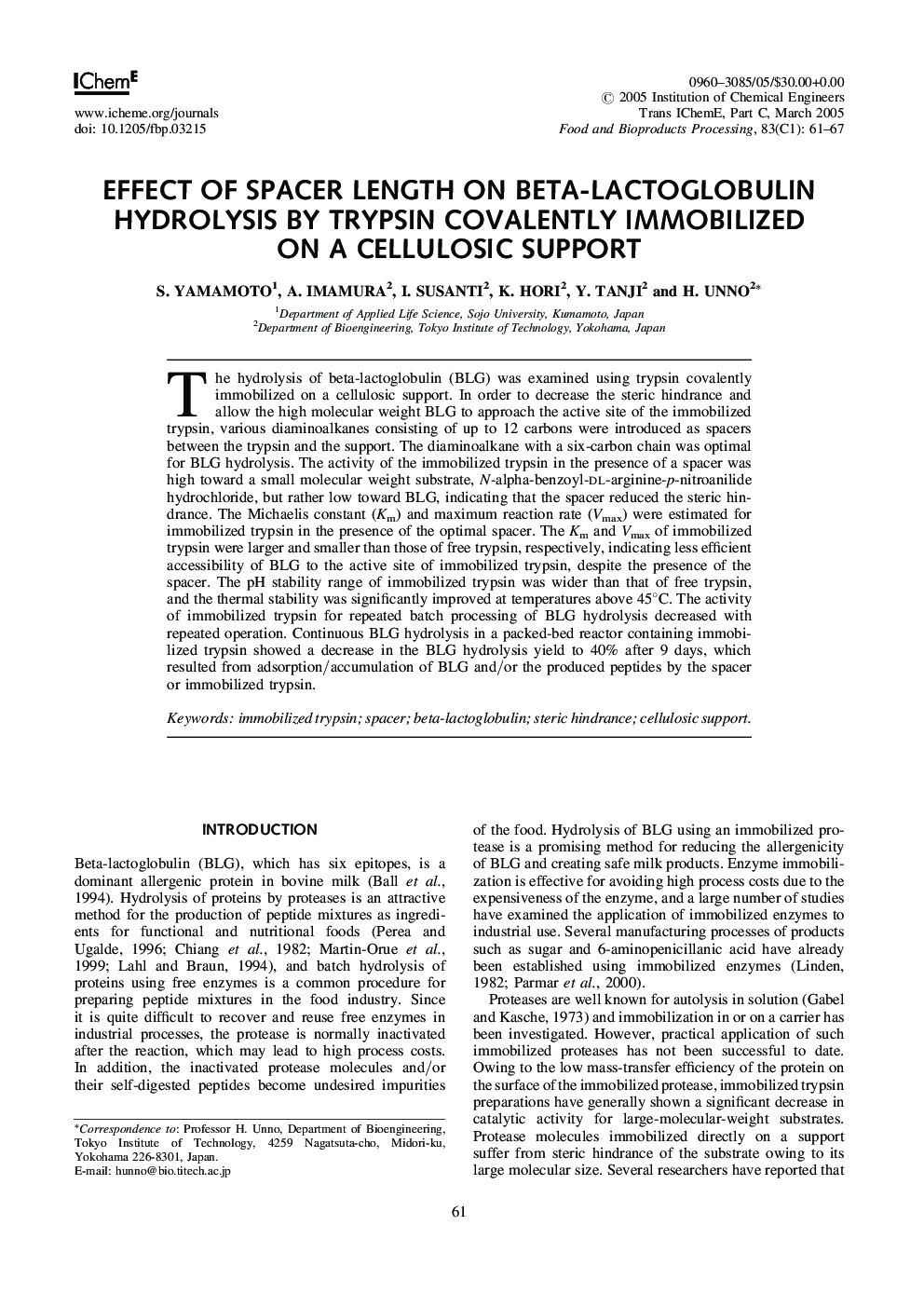| Article ID | Journal | Published Year | Pages | File Type |
|---|---|---|---|---|
| 10234383 | Food and Bioproducts Processing | 2005 | 7 Pages |
Abstract
The hydrolysis of beta-lactoglobulin (BLG) was examined using trypsin covalently immobilized on a cellulosic support. In order to decrease the steric hindrance and allow the high molecular weight BLG to approach the active site of the immobilized trypsin, various diaminoalkanes consisting of up to 12 carbons were introduced as spacers between the trypsin and the support. The diaminoalkane with a six-carbon chain was optimal for BLG hydrolysis. The activity of the immobilized trypsin in the presence of a spacer was high toward a small molecular weight substrate, N-alpha-benzoyl-DL-arginine-p-nitroanilide hydrochloride, but rather low toward BLG, indicating that the spacer reduced the steric hindrance. The Michaelis constant (Km) and maximum reaction rate (Vmax) were estimated for immobilized trypsin in the presence of the optimal spacer. The Km and Vmax of immobilized trypsin were larger and smaller than those of free trypsin, respectively, indicating less efficient accessibility of BLG to the active site of immobilized trypsin, despite the presence of the spacer. The pH stability range of immobilized trypsin was wider than that of free trypsin, and the thermal stability was significantly improved at temperatures above 45°C. The activity of immobilized trypsin for repeated batch processing of BLG hydrolysis decreased with repeated operation. Continuous BLG hydrolysis in a packed-bed reactor containing immobilized trypsin showed a decrease in the BLG hydrolysis yield to 40% after 9 days, which resulted from adsorption/accumulation of BLG and/or the produced peptides by the spacer or immobilized trypsin.
Related Topics
Physical Sciences and Engineering
Chemical Engineering
Bioengineering
Authors
S. Yamamoto, A. Imamura, I. Susanti, K. Hori, Y. Tanji, H. Unno,
